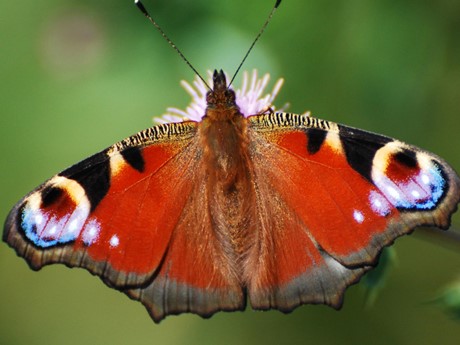Gilbert White celebrations
Guest Blog: Seren Irwin, 04/05/2022
Gilbert White (18th July 1720 - 26th June 1793) is known as the 'father of ecology', with his 1789 book 'The Natural History of Selborne' being the fourth most published book in the English language. White’s musings on phenological events, such as the passage of the swallow, have become legendary.
Gilbert White's House & Gardens in Selborne, Hampshire, is open to the public as a celebration of the life and work of Gilbert White.

The Great oak at in Gilbert White's garden is being recorded for Nature's Calendar (Photo: Seren Irwin)
The life and work of Gilbert White
Since the 300th anniversary of his birth in 2020, the Gilbert White's House & Gardens and Nature's Calendar have been working together more closely to celebrate his life and work.
The focus of an article published in British Wildlife magazine in 2020 was a comparison of Nature’s Calendar with Gilbert White’s phenology. A follow up talk by Professor Tim Sparks began by highlighting White’s pioneering scientific method of watching species and observing how their presence or behaviour changed with the seasons. It is this method that has continued to be used by ecologists today, with only a few changes, largely down to improved technology.
However, perhaps the greatest impact of White’s work has only emerged in the last few years. The second half of Professor Sparks' talk focused on how White’s phenological records can be used as a baseline from which to compare phenological records taken today for Nature’s Calendar. Being able to make comparisons across hundreds of years is highly valuable when studying the impacts of climate change.

Budburst on the larch tree at Gilbert White's House & Gardens (Photo: Heather Cormwell)

A red admiral was spotted in February at Selborne this year (Photo: Chris Piper)
Continuing Gilbert's legacy
It is vitally important that we monitor changes in the timings of natural events to help us to better understand the impacts of climate change.
It is against this backdrop of being able to contribute to a globally recognised phenology dataset that the staff and volunteers of Gilbert White’s House & Gardens are following in the footsteps of their hero.
Adding their sightings to Nature's Calendar, they have already recorded a variety of events from the first budburst of European larch to the first leaf of the Great oak (planted in 1730 in the gardens of Gilbert White's house). The gardeners even recorded red admirals on snowdrops back in February!
“If people that live in the country would take a little pains, daily observations might be made with respect to animals, and particularly regarding their actions and economy, which are the life and soul of natural history.''
GILBERT WHITE, 12 MAY 1770

Pond dipping is one of the activities on offer at the Nature Day at Gilbert White's House & Gardens (Photo: Seren Irwin)
Nature Day at Selborne
On 15 May 2022, Gilbert White’s House & Gardens will be holding its annual Nature Day. The museum passes on ecological knowledge and a love for the natural world to the next generation through both school visits and events such as Nature Day, which is open to the public.
At Nature Day this year there are a variety of activities, from pond dipping to Beatrix Potter character trails to guided wildflower and butterfly walks to bug hunts. There will also be nature conservation organisations present, including the Woodland Trust, where the public have the chance to learn more about Nature’s Calendar and the museum’s involvement.
Please follow this link for more information: https://gilbertwhiteshouse.org.uk/nature-festival-2022/?event_date=2022-05-15

